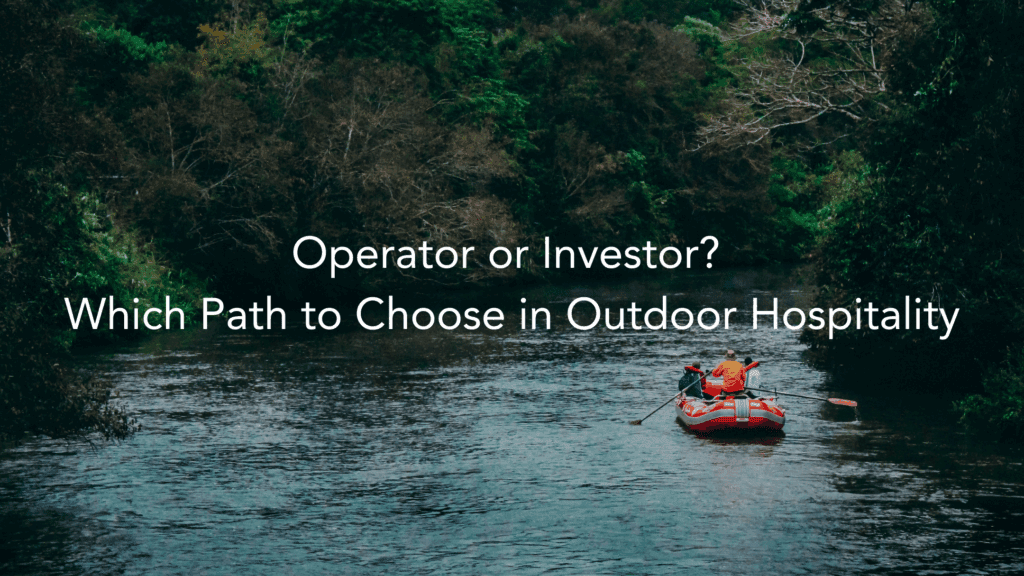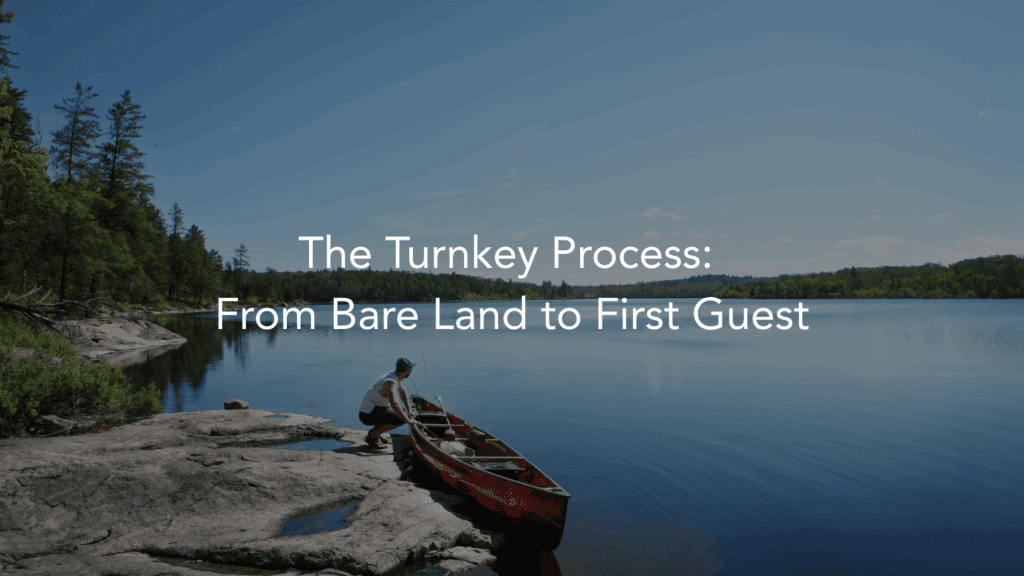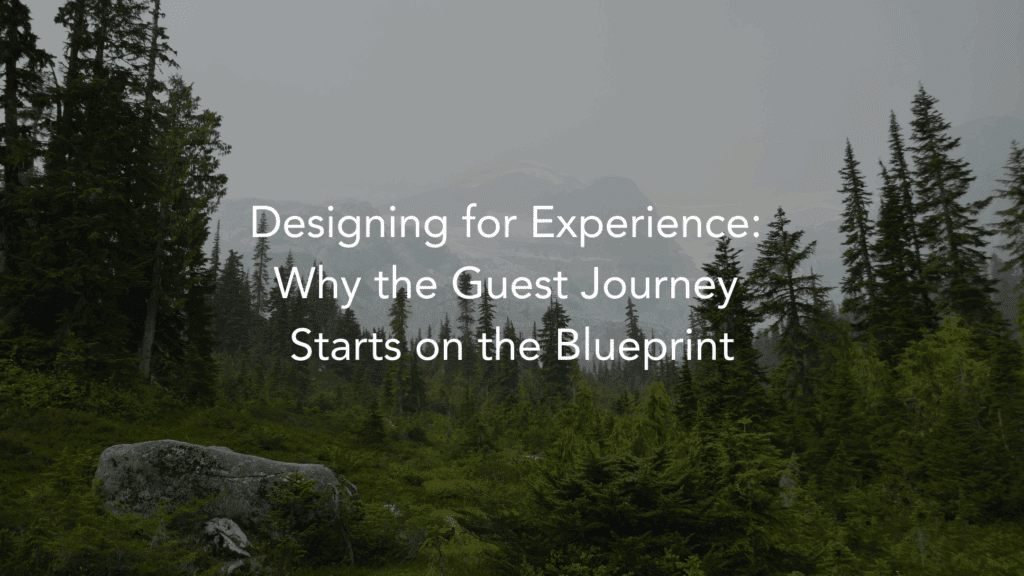Outdoor hospitality rewards good sequencing. When you move from idea to opening in the right order, decisions line up, risks drop, and the guest experience holds together. Done right, this can be delivered in as little as 200 days. Managed through multiple contractors and gaps in knowledge, the same project can stretch for years, or never finish at all.
What follows is the process we use. It is simple in structure, detailed in practice, and designed to keep momentum without cutting corners.
1. Discovery
Discovery is where clarity begins. We look at the land and the reality around it. Access, zoning, setbacks, fire codes, utilities, topography, water, soil, views, neighbors, noise, weather patterns, seasonality. We map constraints and opportunities, then translate them into what is buildable and what is wise to build.
The output is a short, decision-ready brief. It answers practical questions early, so you do not invest in a path that the site will not support.
2. Feasibility
Feasibility connects place to performance. We study demand drivers and the comp set, build a seasonality curve, and model occupancy and ADR scenarios. On the cost side, we size infrastructure, estimate Capex and Opex, and run sensitivities for phasing or unit mix changes.
The goal is not a glossy projection. It is a sober range. You see where returns should land, what assumptions move the needle, and what levers you control. This is where a go or no-go becomes clear, and where a smart program takes shape.
3. Concept
Concept turns numbers and constraints into a lived day. We plan the master layout with the land in mind. Structures are placed for light, wind, privacy, and views. Service roads are separated from guest paths. Back-of-house is efficient and invisible. Noise and light are managed so nights stay dark and quiet.
We design around a simple idea, the perfect day on this site. Morning sun where it matters, intuitive walks to water or trail, places to gather in the evening, silence at night. Interiors follow the same logic. Large openings frame the view, materials feel honest, and comfort supports immersion rather than replacing it.
The deliverable is a concept pack with drawings, a preliminary bill of quantities, and a budget baseline tied to the site.
4. Production
Production is where speed and quality are earned. Components are manufactured off site to spec, long-lead items are secured, and finish packages are standardized where it saves time without losing character. Shop drawings, MEP coordination, and code documentation are completed before the ground is opened.
This is also where compatibility risks are removed. One team sources, fabricates, and prepares what will be installed, so tolerances match and surprises do not show up on site.
5. Build
Build is a single plan, not overlapping agendas. Foundations, hookups, and trenching are sequenced with structure installation and interiors. Inspections are scheduled into the program. Commissioning checklists are run unit by unit, then across the site. Because procurement and fabrication are aligned with the plan, crews do not stand idle waiting for missing parts, and change orders do not consume the budget.
The site stays organized, clean, and predictable. That is not cosmetic. It is what keeps the schedule real.
6. Operations
Turnkey ends at a working resort, not at a ribbon cutting. Pre-opening covers hiring and training, operating procedures, safety, maintenance schedules, and the tech stack for reservations and revenue management. Channels are set, rates are mapped to demand, content is produced for listings and the website, and brand standards are implemented on the ground.
We prefer a measured soft opening. Real guests reveal what drawings cannot. Small adjustments are made quickly, and the team settles into a rhythm before full launch.
Why the Sequence Matters
Most failures are not ideas. They are breaks in sequence. Permitting is started before utilities are understood. Suppliers are selected without coordination. Fit-out does not match rough-in. Service access cuts across guest paths. A missing approval halts work at the wrong moment. Each gap adds time and cost, and each delay weakens the guest experience you set out to deliver.
A single team, one timeline, and one budget remove those gaps. Discovery informs feasibility, feasibility sets the concept, concept locks production, production drives the build, and build hands cleanly to operations. Every choice is made with the next step in mind.
What You Gain
- Speed with control – predictable timelines without corner cutting.
- Lower risk – fewer change orders, fewer surprises, fewer restarts.
- Guest experience that holds together – the day feels intentional from morning to night.
- Financial performance built in – occupancy and ADR come from design and delivery, not from post-launch fixes.
If you are exploring a site, the best starting point is a structured Discovery and Feasibility. You will know if the land and the numbers agree, and you will see a clear path from where you stand today to the moment the first guest checks in.





